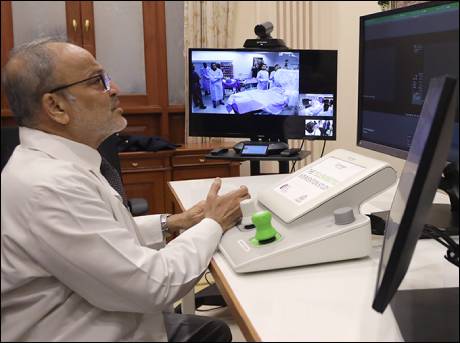
Part V of our series on Telemedicine technologies highlighted by the Covid-19 lockdowns
The world’s first human robotic heart surgery was performed in India
August 3 2020: The cutting edge of remote medical practice can be seen in the emerging field of tele-robotic surgery where a surgeon in high demand can perform procedures in multiple distant locations on the same day.
Robotic Surgery, is a method of performing surgery using very small tools attached to a robotic arm. The surgeon controls and manipulates the arm from a computer console. An electronic eye in the robot arm sends back a high definition 3-D image, magnified 10 times, which the surgeon can view on the computer screen: something not possible in conventional surgery. The surgeon uses controls in the console to manipulate special surgical instruments that are smaller and more flexible than the human hand. The robot replicates the surgeon's hand movements, and eliminates human shortcomings like hand tremors. The first robotic surgery (of the prostate) was performed at AIIMS, Delhi, in July 2006, using the Da Vinci robotic system.
The world's first-in-human robotic coronary surgery using a system from US-based Corindus Vascular Robotics was performed in India on December 4 and 5, 2018. Five patients in the Apex Heart Institute in Ahmedabad, Gujarat, underwent procedures performed by Dr. Tejas Patel, Chief Interventional Cardiologist of the Apex Heart Institute, from inside the Swaminarayan Akshardham temple in Gandhinagar, 32 km away.
Said Dr. Patel: “The first in human cases of remote robotic PCI represent a landmark event for interventional medicine. The application of tele-robotics in India has the potential to impact a significant number of lives by providing access to care that may not otherwise have been possible. For the first time in cardiology’s history, India will shine for this ground-breaking innovation.”
(This story appears as part of the cover feature by Anand Partasarathy, in the August 2020 issue of Science Reporter , the monthly popular science publication of CSIR. Find full cover story PDF here)